Sarduri II, son of Argišti I
Introduction
Sarduri II was the son of king Argišti I. His reign began between 757 and 754 BC and he was a contemporary of the Assyrian kings Aššur-nērārī V and Tiglath-pilesar III. We know from both Assyrian and Urartian sources that Sarduri II fought both of these Assyrian kings. His reign continuted until the year 735 BC.
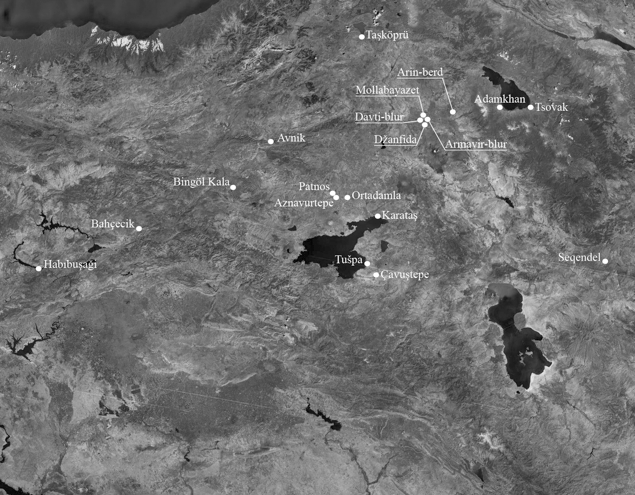
Map showing the distribution of the stone inscriptions of Sarduri II, in: Mirjo Salvini, CTU I: 412.
As was the case with his predecessor Argišti I, Sarduri authored extensive annals. They are inscribed on the rock face at Hazıne Kapısı, an open-air sanctuary situated on the northern slope of the rock of Van, as well as on a stela and its pedestal located within the sanctuary (A 9-3).
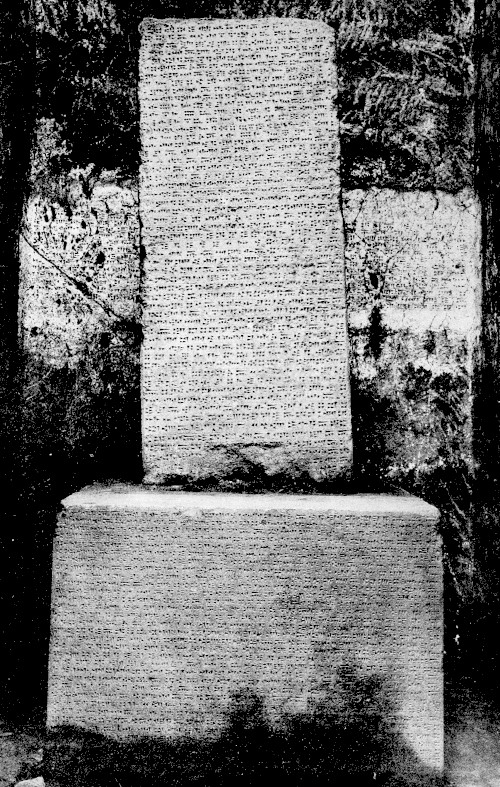
Stele with Annals of Sarduri II from Hazine Kapısı, in: Mirjo Salvini, CTU III: 257 (photo: Nikolai Marr and Joseph Orbeli (1922): plate X.
Another stela (A 9-1) was, in all likelihood, once part of the sanctuary, too. In contrast to the other stela, it was not found in the Hazıne Kapısı sanctuary, but instead in the Armenian church Surp Poģos in Van, where it had been reused as building material. Presumably, it originally stood in the left niche of Hazıne Kapısı. Different proposals have been made for the sequence of the individual parts of the text. The most convincing is the reconstruction suggested by Salvini (see Salvini 1995: 63-68 and A 9-3).
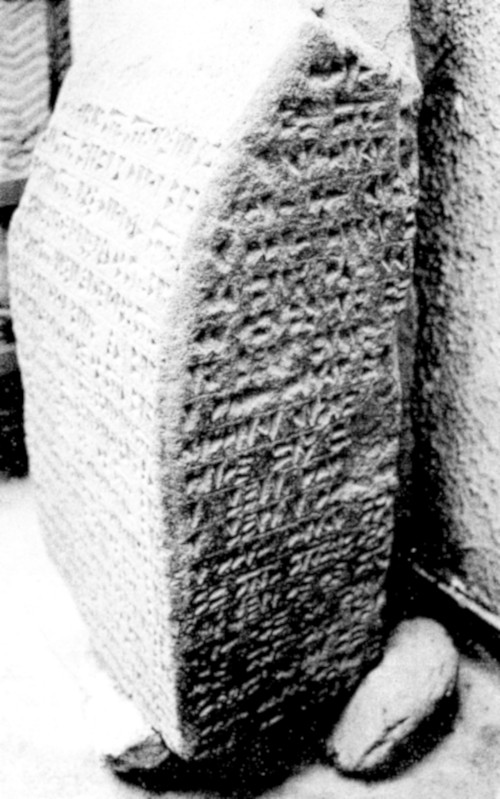
Stele from Surb Poģos inscribed with Sarduri's annals (A 9-1), in: Mirjo Salvini, CTU III: 251.
In addition to his annals, Sarduri II also authored several other stone inscriptions. Most of these were building inscriptions informing the reader about the construction of fortresses, temples, official buildings, and agricultural infrastructure. These inscriptions are mostly clustered around, or to the northeast of, Lake Van, but a few are also located to the west of Lake Urmia and to the west of Lake Van.
Royal Titles
Through the greatness of the god Ḫaldi (I am) Sarduri, son of Argišti, mighty king, great king, king of the regions, king of the land Bia, lord of the city Ṭušpa. (CTU 9-1, ll. 4-8).
Military campaigns
Expansion to the Euphrates River region and the defeat of Malatya
One of his most important campaigns in the first years of his reign led Sarduri II to the Euphrates in the west, continuing his father's expansion into this region. Rock inscription A 9-4, from Habıbuşağı, reports an operation against Malatya and its ruler, Hilaruada. This inscription also includes Sarduri's only reference to the Euphrates. Sarduri states that he defeated and destroyed a great number of fortresses and settlements. He further noted that, after the siege of Malatya, its ruler Hilaruada surrendered and became a tributary. Urartu henceforth had supremacy over the Neo-Hittite state. The name Hilaruada does not appear in any Hieroglyphic-Luwian inscription from the Neo-Hittite states. Scholars have therefore suggested that he might appear under a different name in the Hieroglyphic-Luwian sources such as Sa(?)tiruntiya? (for the discussion see Bryce 2012: 107f. with further literature, see also Salvini 1995: 69 who suggests equating Hilaruada with Kalpurunda).
Campaigns to the south, north, and west
In one section of his annals, inscribed in the rock face of the open-air sanctuary at Hazıne Kapısı, Sarduri reported three campaigns that took place within a single year but which led him in three separate directions. The first led him to the region beyond the Zagros Mountains and south of the land of the Mannians to Babilu and Baruata. The second campaign was to the Transcaucasian settlements of the Etiuni and Erikuahi in the north, while a third led him to the land of Urme to the west of Šubria.
Another year, Sarduri II reported a campaign against the land of Qulha, known as Kolchis in classical sources. According to Argišti's annals, Qulha lay in the region of the modern district of Kars in Eastern Anatolia, where the Diauehi settlements were located.
In Northern Syria, Sarduri managed to gain control over the kingdom of Qumaha (Kommagene), were he received abundant tribute and installed Kuštašpis as ruler.
Military conflicts with Assyria
In military confrontations against the Assyrians, sometimes the Assyrians were successful and sometimes the Urartians prevailed. Unfortunately, both parties only reported their own successes, meaning that our sources provide only biased views of the events.
In the inscription on the stele of Surb Poģos (A 9-1), Sarduri reported a victory over Aššur-nērārī V (754-746 BC) in one of the earliest years of his reign.
Assyria and Urartu were both interested in expanding into the same territories, namely in Northern Syria, Anatolia, and the Zagros Region. It is unsurprising that military conflicts flared between Sarduri II and Assyria in thire struggle for supremacy over these regions. Battles between them were recorded in 743 and 735 BC.
According to his annals, Tiglath-pilesar defeated Sarduri and his North-Syrian allies Mati'-ilu of Arpad, Sulumal of Milidu, and Tarhulara of Gurgum in his third regnal year (743 BC). The battle took place somewhere "between Kištan and Halpi," both of which were part of the land of Kummuh (Kommagene). Tiglath-Pilesar received rich booty, but Sarduri and his allies managed to escape. His annals describe the event as follows:
"They fled to save [their] lives and Sarduri of the land of Urartu rode off alo[ne on a] mare [and] escaped during the night." (RINAP 1, Tigl. III 35 i ll. 32'-34', s. also RINAP 1, Tigl. III 49, ll. 1'-5').
In 735 BC, Tiglath-pilesar claimed to have trapped Sarduri II in the city of Ṭurušpa (Ṭušpa) and to have fought the Urartians "before his city gates". He erected "a royal image in front of the city of Ṭurušpa" and roamed the "extensive lands of Urartu from above to below." (RINAP 1, Tigl. III 39 ll. 20b-25a, RINAP 1, Tigl. III 41, ll. 15'b-19'a, RINAP 1, Tigl. III 47, ll. 45-50). After the defeat Kuštapi of Kummuh as well as Hiram of Tyre, Urikki of Que (Cilicia), Pisiris of Karkemiš, and Tarhulara of Gurgum (the region of Maraş) became tributaries to the Assyrian vassal king of Arpad.
Building activities
Sarduri II put considerable effort into developing the agricultural infrastructure by digging canals (A 9-9 in Aznavurtepe near Patnos), establishing vineyards (A 9-11 in Karataş; A 9-16 in Dafti-Blur/Argištihinili), orchards (A 9-12 in Armarvir/Erebuni; 16), and grainfields (A 9-16) as well as constructing other buildings (A 9-15 in Argištihinili/Armarvir; A 9-14 in Džanfida near Argištihinili/Armavir).
Inscription A 9-17, inscribed on a stone block, reports the foundation of a fortress and city named Sardurihinili in the first year of Sarduri's reign. Because the stone block was found at Çavuştepe and that its inscription refers to a nearby settlement, it is obvious that Sardurihinili should to be identified as the archaeological site of Çavuştepe. It is located on a high, elongated hill in the valley of the river Hoşap Su, some twenty miles southeast of the capital Ṭušpa, as the crow flies.
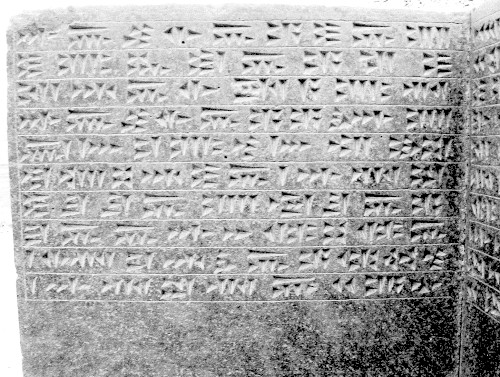
Temple inscription from Çavuştepe (A 9-17), in: Mirjo Salvini, CTU III: 278.
Sarduri II reported that he cultivated the previously barren land by digging a canal and by planting vineyards, orchards, and grainfields. He further mentions building a tower temple for the local god Irmušini and a temple for the god Haldi.
A 9-18, inscribed on a stone slab from Bahçecik, reports the foundation of a fortress which Sarduri also called Sardurihinili. The Urartian king further stated that he built a tower temple for the god Haldi and installed a governor there in order to administrate(?) the region as far as the cities of Miliṭia (Malatia), Qu[maḫa], and Niḫiria, and to the lands of Ar[me?] and Hašime [. . .]. This information indicates that the fortress referred to in the text should not to be identified with Çavustepe. Instead, it was located in the region of the village Bahçecik in the modern district of Karakoçan, in the Elazığ province.
A 9-13 refers to the Argištihinili fortress (modern Armarvir), which was already known from inscriptions of Sarduri's father Argišti, who had it built (see the building inscription A 8-16 from Sardarabad near Armavir, and the obscure inscription A 8-14 from Armavir). Interestingly, A 9-13 mentions Sarduri along with his father and expresses the wish that their names be preserved.
In his inscriptions, Sarduri II additionally described the construction of ašiḫuši- and barzidib(i)duni-buildings and filling the silos attached to them (A 9-19; 20; 21). The ašihuši-building was presumably a banquet hall whereas the barzidibduni seems to have had a cultic function. Stocking the silos is further mentioned in: A 9-21; 9-22; 9-23; 9-24; 9-25; 9-26; 9-27; 9-28; 9-29; 9-30; 9-31; 9-32; 9-33; 9-34; and 9-35.
Religious activities
In the stele inscription found in the Surb Poģos church (A 9-1), which in all likelihood was originally part of the open-air sanctuary of Hazine Kapısı, Sarduri reported establishing a ritual for the prosperity of the country (CTU 9-1 lines 9-13). CTU A 9-38 mentions the god Quera in an unclear context, whereas in CTU A 9-39 not even the deity's name is preserved. Several inscriptions mention the construction of tower temples for the god Haldi (A 9-16, 9-17, 9-18 and 9-37) and for the local god Irmušini (A 9-17), as well as the construction of additional temples (A 9-17) and gates for the god Haldi (A 9-15, A 9-16).
Inscriptions on metal objects
Bronze objects were found in Karmir Blur/Teišebani (B 9-1 to 31) and Tul-Gilan (A 9-32). The origins of B 9-3a and 33 are unknown. Some inscriptions refer to Sarduri II's ownership. These were found on B 9-4 to 7A-F (shield bosses), B 9-14 to 22A (cups), B 9-23 (chariot ornament), B 9-24 (bronze handle with lion's head), B 9-25 to 29 and 33 (pieces of horse harnesses), B 9-30 to 31 (pieces of door locks) and B 9-32 (blade). Other inscriptions refer to votive offerings to Haldi, including B 9-1 to 3a (shields), B 9-5A-B (helmets), B 9-10 to 12 (quivers) and B 9-13A-C (arrow heads).
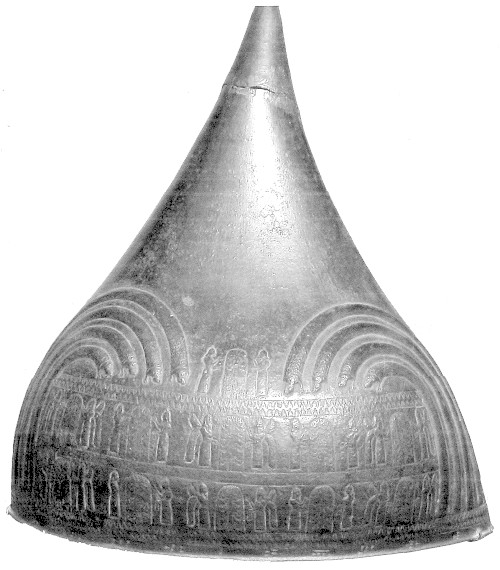
Helmet of Sarduri II from Karmir-blur with votive inscription for the god Ḫaldi (B 9-9), kept in the Museum of Erevan, in: Mirjo Salvini, CTU IV: 48.
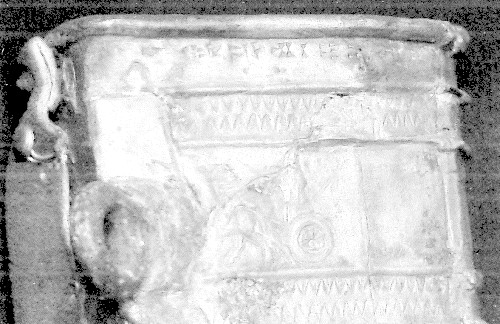
Quiver of Sarduri II from Karmir-blur with a votive inscription for the god Ḫaldi (B 9-11), kept in the Armenian History Museum in Erevan, in: Mirjo Salvini CTU IV: 49.
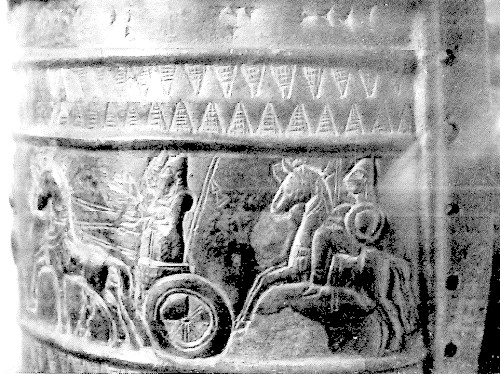
Quiver of Sarduri II from Karmir-blur with a votive inscription for the god Ḫaldi (B 9-11), kept in the Armenian History Museum in Erevan, in: Mirjo Salvini CTU IV: 49.
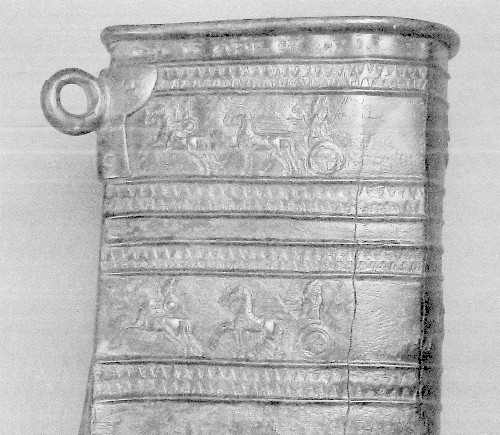
Quiver of Sarduri II from Karmir-blur with votive inscription for the god Ḫaldi (B 9-11), kept in the Eremitage in Saint Petersburg, in: Mirjo Salvini, CTU IV: 50.
Further reading
Birgit Christiansen
Birgit Christiansen, 'Sarduri II, son of Argišti I', Electronic Corpus of Urartian Texts (eCUT) Project, The eCUT Project, a sub-project of MOCCI, 2021 [http://oracc.museum.upenn.edu/ecut/urartianrulersandtheirinscriptions/sarduriiisonofargitiia9andb9/]